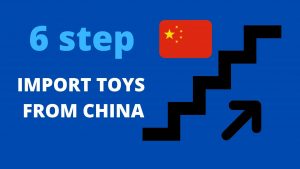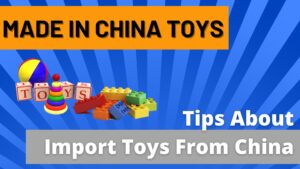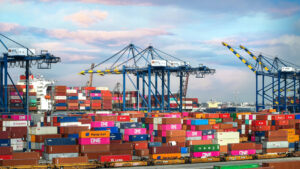China makes more of almost everything than any other country. So, it’s very common for businesses to try to bring in goods from China. US companies are no different.
#1 What Is the Import Tax from China to the USA?
#2 Do I have to pay taxes on things I import from China to the US?
#3 How are the duty rates set?
#4 How much is the tax on imports from China to the US?
#5 What is the current tax on goods coming from China to the US in 2022?
#6 How to caculate the import tax from China to the US?
#7 Where to Check the US Tariff?
#8 How to Pay the Tax on Imports?
#9 How to Avoid Tax or Pay Less?
#1 What Is the Import Tax from China to the USA?

When you ship goods across an international border, you have to follow a trade agreement between the two countries. One of these parts is the import tax or import duty. In other words, it is the fee you have to pay to get your goods through customs or the international border. Because of this, it is also known as customs duties.
When importing from China, there are two basic terms you should know about customs and taxes. The tariff is one, and the import duty is the other.
Now, the tariff is a percentage of the value-added tax (VAT) that is added to things that are brought in. On the other hand, the real amount of tax is the import tax from China to the US. If the tariff is 10% and the price of the item is $1,000, the import duty will be $100. That is the main difference between a tariff and an import duty.
Different countries have different import taxes. Due to different trade deals, some countries don’t even have to charge customs duty. It also depends on what the product is. When it comes to tariffs and customs duties, it usually costs less to bring in everyday household items than to bring in luxury items or electronics.
But in the US, the United States Customs and Border Protection (CBP) enforces different rules and laws about customs. They also decide how much tariffs and import duties will be. In the last part of the article, we will find out more about this.
#2 Do I have to pay taxes on things I import from China to the US?
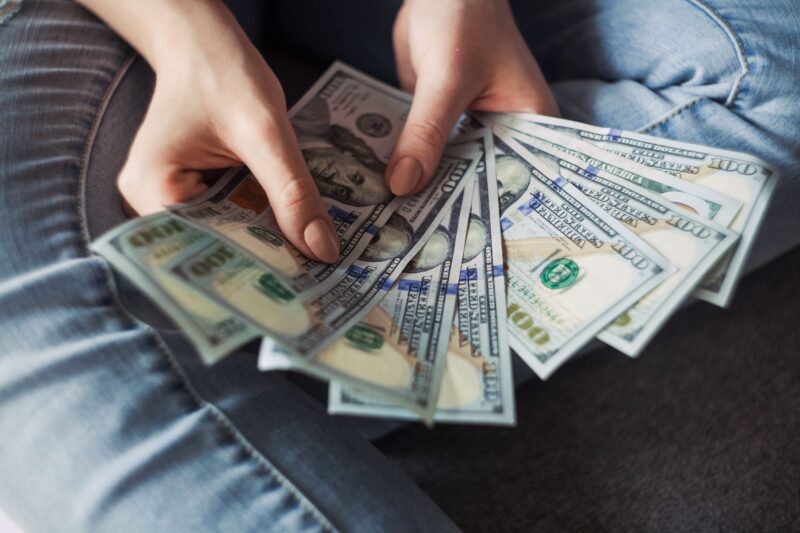
Yes, you will have to pay import duty when you bring something from China to the US. This is because China is not one of the countries where import taxes are not charged.
But, as was said before and will be said again, you don’t have to pay any import tax on items that are worth less than a certain amount. So it’s easy to say that it depends on how much the goods cost.
At the moment, US trade policy says that goods that cost less than $800 do not have to pay import taxes. That means you don’t have to pay any customs fees for items worth up to $800. And there are fees for items that cost more than $800. The H.S. code determines how much the import tax is.
#3 How are the duty rates set?
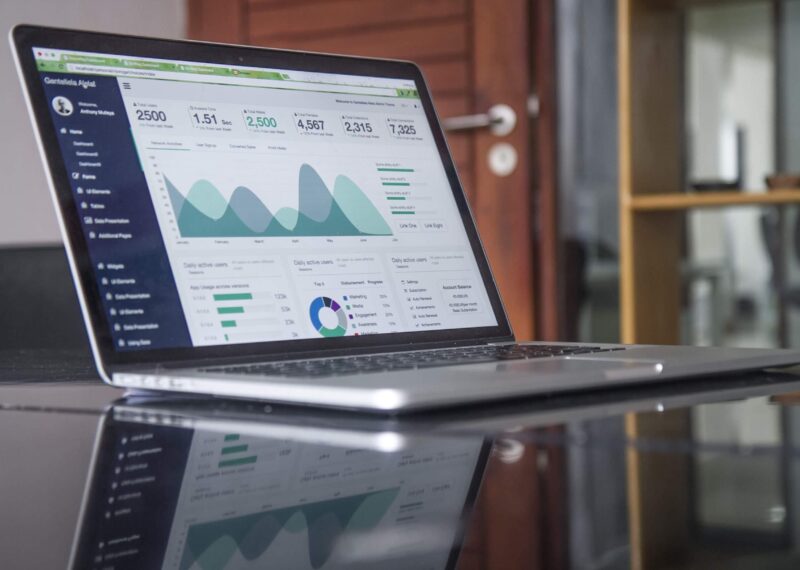
Setting duty rates is anything but simple. It depends on a number of things that the customs office decides. The same is true for customs fees from China to the US.
When it comes to figuring out duty rates, the Harmonized Tariff System (HTS) does that for every item. It’s kind of like a guide that you can use to figure out the duty rates for any product. Now we’ll talk about how the rate is set.
There are only two steps to the whole process, but both of them are hard. First, the product needs to be put into a category based on what it is. Classification experts need to know specifics about the product, like where it came from, what parts it has, etc.
Also, keep in mind where the materials that went into that product came from. This is because some countries let you buy a certain product tax-free, but other countries don’t. Because of this, the country of origin should also be taken into account.
The US International Trade Commission-Tariff Database can give you a rough idea of what the product’s duty rate is. The duty rate, on the other hand, will be closer to the real rate the more accurate information you give about the product.
And the actual import duty rate will vary a little bit based on the differences and some things you might miss. Still, CBP, not the importer, makes the final call about the import rate.
#4 How much is the tax on imports from China to the US?

Just like how the duty rates are set, the amount of import tax depends on a number of things. First, as we’ve already talked about, there’s a certain amount below which goods don’t have to pay duty rates.
At the moment, this amount is $800. It used to be $200. The exempt rate may still be $200 for some cases or items. It means that you don’t have to pay for things that cost less than $800, but you do have to pay for things that cost at least $800.
There are two parts to US customs fees for goods from China. The formal entry is one, and the informal entry is the other. These are things that cost more than $2500. Since the asset is worth a lot of money, security must take it into account, and the import must be seen as a business. Some kind of surety bond is needed to make sure that such expensive assets are kept safe.
And the price of the product must be less than $2500 for an informal entry. Since the price of the product doesn’t seem to be commercial and isn’t very high, an entrance bond or surety bond isn’t needed to protect it. But there are still some cases that are different. You can always find out what your goods need to meet from the port of delivery.
Now, you won’t have to pay any import tax if the product costs less than $800. It also holds true for some types of products. Textiles, for example, are considered informal entries until they reach $2500.
#5 What is the current tax on goods coming from China to the US in 2022?
Depending on trade agreements and sometimes trade wars, the US import tax from China changes from time to time. It also changes when a government’s term ends and a new one begins.
Here’s how to figure out the import tax from China to the USA in 2021. The price changes depending on the type of product, the amount, and other factors. Here are the rates right now:
- Tax on imports from China to the US as a fee for processing goods
This fee applies to all goods coming into the US from China. The imported goods can be split into two groups based on how much they cost. First, if the value is less than $2500, the cost per shipment can be $9, $6, or $4, depending on the type. If the price is more than $2500, the fee will be 0.3464 percent of the real value of the goods being imported. The minimum MPF is $25, and the most you can put into it is $485.
- Tax on goods coming from China to the US as “Harbor Maintenance Fee”
It means the goods that were brought in by ship. It was first seen in the late 1980s. It is, as the name suggests, the cost of keeping the containers and terminals in the USA in good shape. At the moment, the HMF is 0.125% of the value of the imported goods. Since the amount is so small, it doesn’t have much of an effect on your import taxes.
- Extra taxes on imports
A federal excise tax is put on products that need help from the government. For some things, like tobacco, alcohol, and so on, you have to pay this extra tax. But you don’t have to pay this extra tax on other things in the US because we don’t have VAT. This federal excise tax also doesn’t apply to consumer goods that come from China to the United States.
- Customs Value
HMF, MPF, and customs duties are all added up to get the final customs value. The calculation is based on the “Free on Board” value of the goods being brought in. When figuring out the answer, these things are taken into account.
- Export clearance from China
- Product cost
- Transportation cost: It is the leading cost in terms of importing from China ports.
#6 How to caculate the import tax from China to the US?

Calculating import duty from China to the US is just as important as other math. A small mistake in your calculations can wreck your business. So, you need to know how to figure out the right way to figure out import duty from China to USA.
If you want to figure out how much your product will cost to bring from China to the US, you need to have HS check the codes for your products. The duty rates for each HS code depend on the type of product, and you have to pay them based on that. Here is what a Harmonized System (HS) code is, in case you don’t know what it is.
It is a global, multifunctional product nomenclature that was made by the World Customs Organization (WCO). It is now used to find out what kind of goods come into the US from other countries, in this case China. How do you find the H.S. code now? You can type your question into the search box on the HTS website. You’ll find the results in order: chapter, heading, sub-heading, tariff item, and classification number.
Checking the import duty rates is the next step. It can be done online. There are many websites where the online import duty rate can be checked. But you can always go to the official HTS website, where you can use the product description to find the item code and check the exact amount of import duty.
Now let’s talk about how to do it. If you know the HS product code for your item, you can find out how much the import tax is. And the actual price of the product is increased by the import tax rate for that code, product in actual. Now, the tax will apply to the product even if it doesn’t come with shipping. This is the usual way to do things.
Now, if your imported product has to pay 25% more in duties, the price will go up even more. So, some importers try to get around the import duty or find a way to cut it. We’ll talk about it in the next part of this article.
#7 Where to Check the US Tariff?
As was already said, the process of figuring out import duty and tariff rates is well set up. You just need to check your US tariff on the right websites and in the right media. The US Harmonized Tariff Schedule is put together by CBP, which is the Bureau of Customs and Border Protection.
You can look at this schedule on a variety of websites. But you should check the official website: Harmonized Tariff Schedule Search (usitc.gov).
As you look for the Harmonized tariff code, you’ll notice that it has six numbers. The first two numbers show the chapter in the HS Nomenclature where the goods are put.
The next two numbers show the title of that chapter. And lastly, the last two numbers indicate the subheading for that chapter.
Then it will be easy to find the right classification for the product you are importing. What’s left is easy. Then, you can check the US tariff for your product right from that page.
#8 How to Pay the Tax on Imports?

When the shipment arrives, the importer needs to be there as soon as possible with all the necessary paperwork. The papers will be given to the team from Customs and Border Control in the United States. The importer has 15 days to move the shipment from that point.
If the importer doesn’t do this, the item will be moved to the customs warehouse and the importer will have to pay for the cost of storage as well. If the shipment is kept in storage for 6 months, it will be auctioned off.
The importer needs the following papers to pay the fees and get the shipment:
1. Bill of lading: This important piece of paper makes sure that the exporter has the invoice and that the importer has the goods he or she ordered. It is when the shipping company takes possession of the goods.
2.Commercial invoice: This is a collection of all the details about the goods and how they will be sent. The customs charges are sent to CBP based on this piece of paper. The following are in the paper:
- Quantity
- Product description
- Destination address in the US
- Country of origin
- Name and address company selling these products
- Value of goods in both currencies
- Tariff classification
3. Packing list: The packing list includes all materials on the invoice along with their packaging details. When searching the package, the customs officials use this list to ease up the process.
4. Arrival notice: As the name suggests, it is a notice of the arrival of your goods provided by the freight company upon the arrival of the shipment.
5.Surety bond: It is like a contract of the importer with the customs authority. Any US security firm can buy these bonds. You can employ a customs broker for the same, as well. Surety bonds ensure that charges like customs tariffs, import fees, fines, etc., are clear to both parties.
- One is the annual bond. As the name suggests, these bonds last for one year, which can be used for all imports during this period. This general import tax payment makes it a desirable option for importers. For a bond covering $50,000 USD, you will have to spend $400-$450. In case you want cheaper bonds to be extended, you can still purchase the larger one.
- The other type of customs bond is the single entry bond. If you are such an importer who imports several shipments a year, let’s say 5-10 each year, you will find the single entry bond pretty useful. It would save 5% of your shipment cost. It is said to be affecting the import duty from China to the
As you can see, there is a system for paying that you can use. You can choose the best option for you and pay for it based on your business type, the time of year when you ship, the weight of the packages, the value of the goods, and so on.
#9 How to Avoid Tax or Pay Less?

Tax is an extra cost that importers have to pay. When a product’s price goes up, tax is a big part of the reason why. Because of this, all importers want to get rid of the tax or at least cut it down a lot so they can sell their goods for less money and get more customers.
An important thing to know about the tax is that it does not depend on the size or amount of the item. For example, the tax on a refrigerator will be less than the tax on a phone. But there are a lot of ways for importers to avoid paying the tax or even get rid of it completely.
Ways to not pay taxes
- Prominent ways by which importers can avoid the tax fully:
- Personal exemption: In the year 2016, the personal exemption was increased from 200 dollars to 800 dollars by Obama President.
It was a big relief for importers who often travel from China to the U.S. and carry goods on a small amount of money. The importer has to bring these 800-dollar items at the same time on the same ticket.
But we should keep in mind that some products are not included in this duty-free section. If the fair retail value is more than $5, the importer has to pay for an alcoholic drink, an alcoholic perfume, or a substance with nicotine in it.
Again, a lot of other things are included in the tariff quota, and they must be taxed. If a person under-reports his/her product’s price, and the actual price is suspected by the customs to be higher than 800 dollars then the importer will be under taxation after evaluation by the customs.
- Sample: Any importer contacts a supplier before starting a business. The importer must show his/her products to the buyers so that they can understand the interest of the products within the buyers.
Again, the importer can also assure the customers of the quality of the products by showing them the product. To do any, the importer needs samples. These samples are provided by the supplier.
Samples are out of taxation. But there is a condition here. For any sample to be out of taxation it must be mentioned by the supplier that, it is for non-commercial purposes.
Again, the valuation of the sample should be of token costs less or equivalent of 1 dollar. If somehow, it is not written on the sample that it is out of commercial use or the token costs more than 1 dollar, if the product falls under taxation, the importer may need to give tax for it.
- Drop-shipping: Here the business is conducted by a third party. This third party works as a transferor. They contact the seller and manufacturer and then ship the product from the manufacturer to the seller. This is a perfect example of supply chain management.
As payment, the seller or manufacturer can give the drop-shipping company a cut of the sales. The maximum weight of an ePacket is 2 kilograms. Also, if a third party caused the damage to the product, they may have to pay around 6000RMB in compensation.
How to pay less tax
There are 3 ways to pay less tax:
Putting a lower value on the product on the commercial invoice: Customs fees are based on the value of the product as stated on the commercial invoice. Both the suppliers and the importers can agree on something.
If the importers write down the price of the goods they are bringing in, the importers may also pay less Tax. But there is a chance that this could go wrong. If the customs office finds out that the price was lowered on purpose, there will be a penalty tariff. Customs can even take the goods away or destroy them.
By international mail, the package can be sent in more than one batch. If the item being imported costs more than $2500, it needs to be entered in a formal way. The importer can ask the supplier to split the orders into orders that are less than $800. But if customs finds out that the importer’s real goal was to cut taxes, the importer will be in trouble and will have to follow rules.
Through intermediate trade or entrepot trade, products that are going to be sent from Chain to the U.S. have to pay an extra tax of around 25%. But this happens less often when a person moves from another country to the United States.
So, importers can say that a product came from an intermediate country if they pay for the extra cost of the transition. Let’s say the importers can take the goods from Chain to Taiwan and then bring them back to the USA as goods made in Taiwan.


